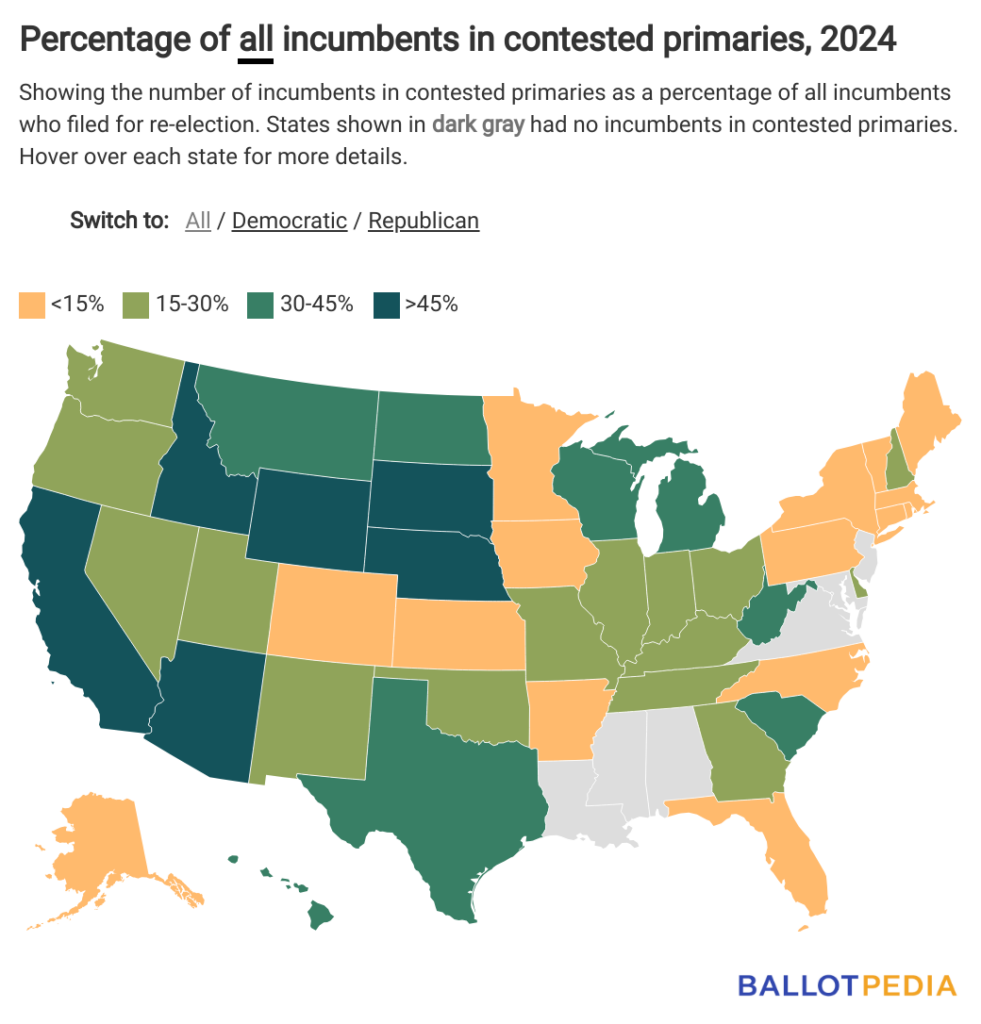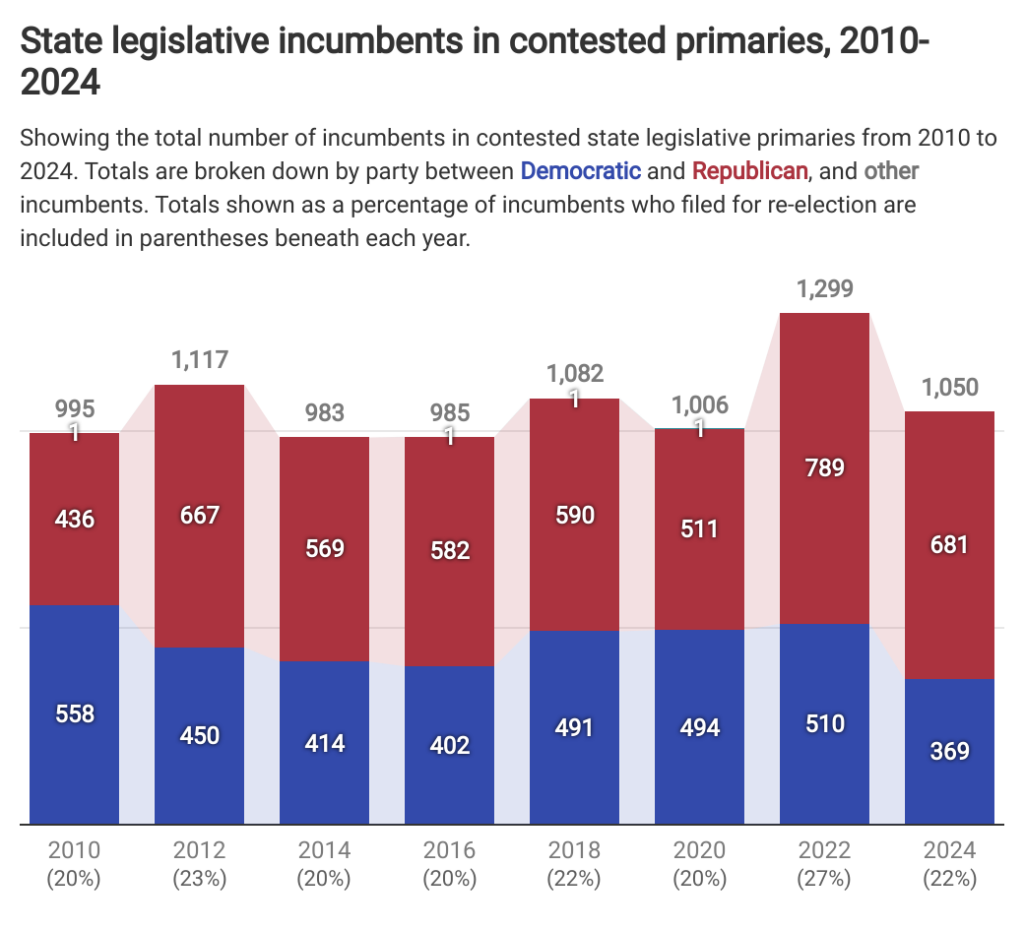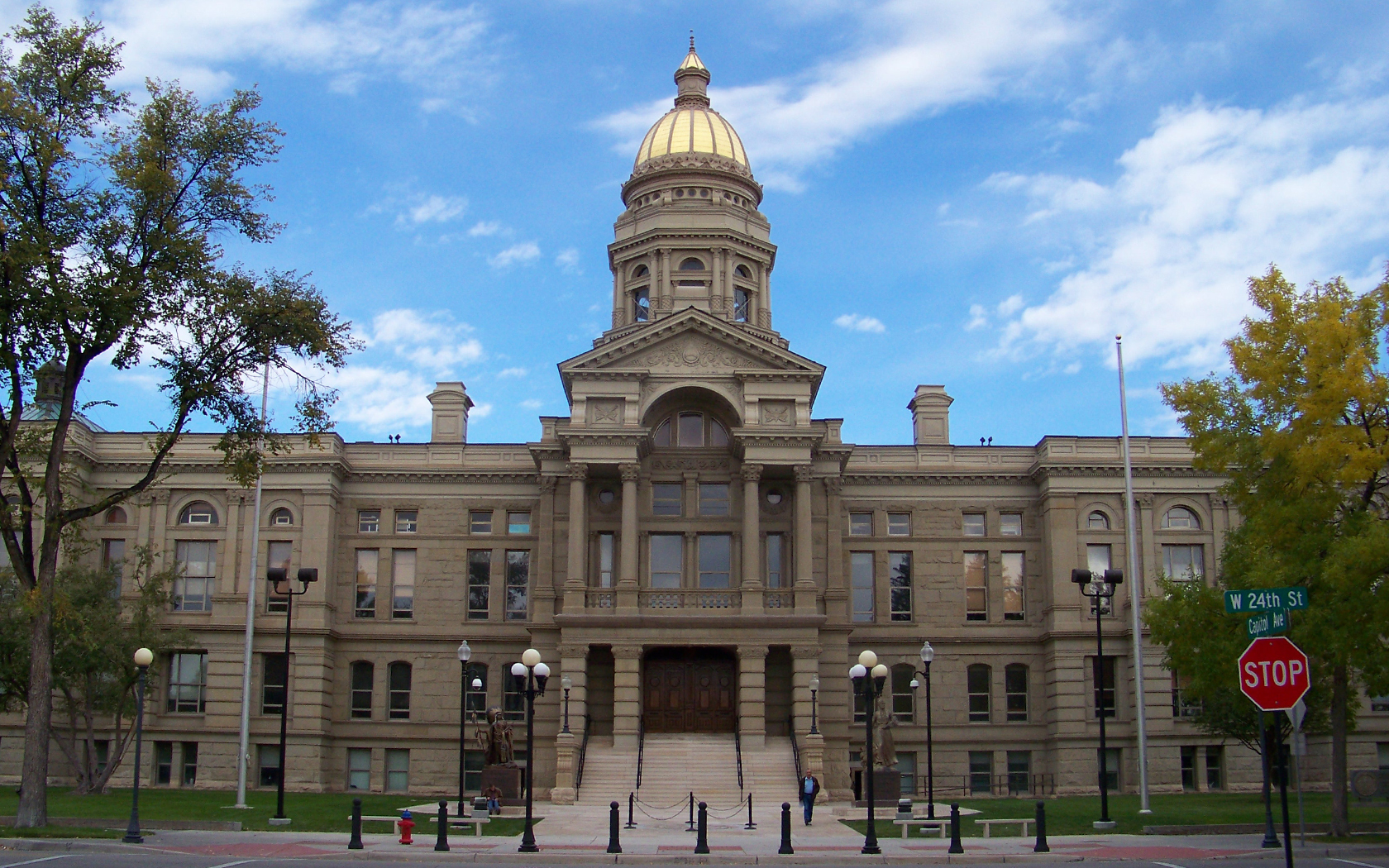This year, the states with the highest percentages of incumbents contested in primaries are Wyoming (65.6%), South Dakota (60.9%), Nebraska (50.0%), Idaho (49.5%), Arizona (45.7%), and California (45.5%). Four of these states have Republican trifectas, one has a Democratic trifecta, and the other has a divided government.
A primary is contested when there are more candidates running than nominations available.
This is the first year since Ballotpedia began gathering data in 2010 that a state had over 65% of its incumbents in contested primaries. The only other year to have a state with an incumbent contested rate of at least 60% was 2022 with 60.8% in Idaho.

Of the 4,848 incumbents running for re-election nationwide, 22% (or 1,050) of them are or were contested in primaries. This is roughly average compared to previous years, down from 27% in 2022 but higher or the same as the 20% and 22% in 2020 and 2018, respectively.
Ballotpedia uses the number and percentage of incumbents in contested primaries to help determine the overall competitiveness of an election cycle. A larger number of contested primaries indicates more opportunities for voters to elect a non-incumbent to office. A smaller number indicates fewer of those opportunities.
This year, 44 states are holding state legislative elections. Below is a comparison of 2024 figures to those in 2020, which was the last time the same 44 states held elections.
- There are 369 Democratic incumbents in contested primaries, representing 17% of all Democratic incumbents who filed for re-election, a 25% decrease from 2020.
- There are 681 Republican incumbents in contested primaries, representing 26% of all Republican incumbents who filed for re-election, a 33% increase from 2020.
- The total number of incumbents in contested primaries—1,050—is higher than in 2020 (1,006), representing a 4% increase.

Ballotpedia will be publishing more state legislative competitiveness articles in the weeks to come. For now, you can find more state-level analysis here.


